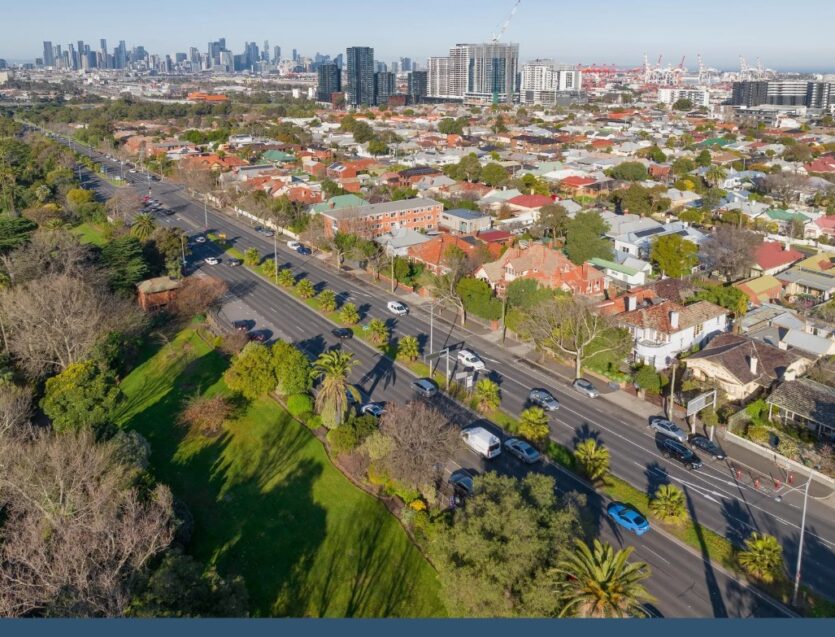Prime Minister pivots to an early exit
Opinion Piece by: Christopher Joye, Columnist
Source: Australian Financial Review
April 8, 2020
Australia’s pragmatic Prime Minister Scott Morrison has, unsurprisingly, pivoted to the possibility of an early release from the lockdown, which if prolonged indefinitely would push the country into an extreme depression with far greater human costs than the capricious coronavirus.
ScoMo also had no compunction shutting down the NSW premier’s suggestion that the lockdown could continue until we have a vaccine. The narrative has shifted to the Prime Minister flagging that states that crush the transmission quickly could experiment with a more rapid transition to the “new normal” of getting ultra-low-risk, working-age employees back to making a living, which could give them a competitive advantage over states that lag.
This sudden change in tone is the expected result of Australia’s success in flattening the infection curve with the rate of increase in new infections peaking in early April in line with our projections in March. Our models continue to predict that new infections in the US will likewise peak this month, which we have argued is a crucial inflexion point for markets.
As investors start to look through the surge in infections and deaths towards the other side of the economic and liquidity bridge that has been built by central banks and treasuries, sentiment should improve.
The second key regime change we are focused on is the rapid political realisation that indefinite containment is unsustainable and risks destroying the livelihoods of the overwhelming majority to protect a tiny minority. If there is one thing politicians can be trusted to do, it is to seek to satisfy popular preferences.
The truth is that we are fortunate this pandemic carries a relatively low fatality rate. It serves as a priceless dress rehearsal for that future juncture when a much more deadly pathogen emerges that presents an existential threat to the survival of our species.
One area where Australia was already prudently prepared – much more so than perhaps any other country – has been in the domain of financial system resilience. It is a tremendous credit to the Australian Prudential Regulation Authority (APRA) that it forced our banks to become the best-capitalised deposit-takers in the world in anticipation of a shock such as this.
On an “internationally-harmonised” basis, CBA’s 17.5 per cent common equity tier one (CET1) capital ratio ranks above any other large bank globally according to its latest results presentation. (ANZ is third, Westpac fourth, and NAB tenth.)
Loan protection
The “unquestionably strong” core equity buffers our banks have accumulated since 2014 protect creditors from losses in the event that loan losses spike. These reserves have been augmented by a sharp increase in conservatism across the financial system as banks divested riskier, non-core businesses and substantially enhanced the quality of their lending standards.
On Tuesday, APRA announced that it is encouraging banks to modulate dividend payments to shareholders as a precaution to ensure lenders do not unnecessarily consume capital while they are seeking to support credit creation across the economy during this time of need.
APRA has been conspicuous in not blindly following its (inferior) regulatory peers overseas by banning dividends outright, which is necessary in jurisdictions where banks have been myopically allowed to operate on skinnier capital ratios.
Three of the four major banks report their half-year results over the next month, with CBA presenting its full-year numbers in August. It is possible one major bank, which is focused on capital generation, defers its half-year dividend to its full-year release. Two others could materially reduce their half-year payments. CBA is in the strongest position with around $4 billion in excess capital and is certain to look after the hundreds of thousands of retirees who own CBA shares for the attractive yield.
Retaining profits and enhancing capital is demonstrably positive for all bank creditors. On Tuesday, Bank of Queensland announced that it was repaying its $150 million Wholesale Capital Notes hybrid security that was due to be called in May with APRA’s explicit approval. BoQ noted that it would issue a replacement security once market conditions stabilise.
This is important given there was some apprehension that BoQ would not meet expectations, and follows the trend set by other banks, including Macquarie and NAB, which repaid about $1.74 billion of their hybrids in March (again with APRA’s approval), even though they did not end up issuing replacement hybrids.
Likewise, Westpac repaid a $1.1 billion Tier 2 subordinated bond last month without issuing a successor security. And, finally, Challenger has secured APRA approval to repay its CGFPA hybrid at a future quarterly distribution date when conditions normalise and it is able to launch a replacement instrument.
All of this makes perfect sense. The banks could potentially issue new debt and hybrid securities right now if they really had to, but it would be heinously expensive, pushing up their funding costs, which would have to be passed on to business and household borrowers in the form of higher lending rates. At a time when the banks are seeking to act as one of “Team Australia’s” shock absorbers through a deep, albeit temporary, crisis, this would be completely counterproductive.
Stress tests
One issue we have been interrogating is how bad the crisis could get, and what it means for loan losses and the banks’ capital ratios. Put a little differently, we have tried to blow up the banks’ balance sheets. We regularly do this stress-testing of all institutions, including the likes of non-banks such as Challenger.
Challenger is different to a bank because it is required to mark-to-market both its assets (eg, bonds) and its liabilities (ie, annuities). People often assume that because Challenger is suffering mark-to-market losses on its assets, it is going to get into trouble.
But asset losses are negated somewhat by reductions in the value of its liabilities. And this mark-to-market discipline means that Challenger tends to be a much more price-sensitive capital allocator than a bank that takes a “hold-to-maturity” approach to asset pricing that does not reflect valuation changes unless the loan goes into arrears. This is evidenced in a recent toggle in Challenger’s asset holdings away from equities and high-yield bonds, which was pleasing to see.
When we run shocks worse than the global financial crisis over Challenger’s balance sheet, it is surprisingly difficult to construct scenarios that result in it needing to raise a lot of new equity.
In APRA’s latest published stress test of bank balance sheets, the regulator assumed a scenario in which house prices fall 35 per cent and the unemployment rate increases to around 11 per cent, among other adverse inputs. APRA found that average bank capital ratios only fell by around 3 percentage points, which would reduce the major banks’ CET1 ratios from 11 per cent to about 8 per cent. This is importantly well above the 5.125 per cent CET1 threshold at which point the bank’s hybrid securities are converted into equity. It was also a change from stress tests in prior years when the banks were not as well capitalised.
Safest banks in the world
We have run a range of even more challenging scenarios, including a recession that is assumed to be 25 per cent worse than the 1991 downturn when the banks’ bad and doubtful debt (BDD) charges soared to almost 3 per cent (specifically, 263 basis points) of their gross loans in 1992. That is almost 10 times worse than the peak losses assumed by Standard & Poor’s in its downside modelling and multiples the losses APRA’s stress test projected.
In 1991, the major banks were much less risk-averse and far more free-wheeling with their lending standards. They also did not have government-guaranteed deposits or access to special emergency lending facilities via the RBA’s Committed Liquidity Facility. And they did not pay over $1 billion in annual taxes to the government for the implicit public guarantee on their senior bonds (via the wholesale liability levy), which S&P recognises with a two-notch rating upgrade to AA-.
When my team jacks up loan losses to levels that are 25 per cent worse than the experience between 1990 and 1993, they find that the banks’ CET1 ratios still bottom out in the 6.3 per cent to 7.8 per cent range at their nadir. While APRA’s hard-nosed approach to deleveraging the banks since 2014 has been tough for shareholders to bear via lower returns on equity, it has bequeathed depositors and creditors the safest banks in the world.



Currently, Perth is the capital city that our research is driving our clients to for optimal investment outcomes. Keep an eye out for our upcoming report on Victoria, and the opportunities we feel this market will present from early to mid-2025. CPA Property Reports are the ultimate research tool for those considering an investment into the any Australian property market.